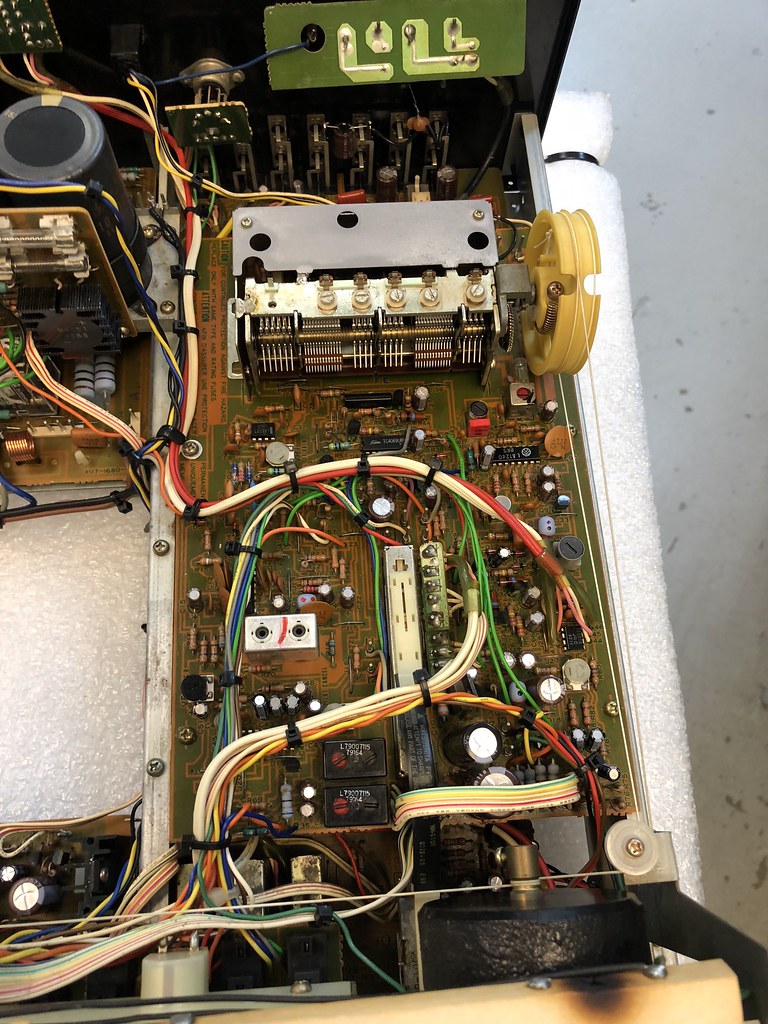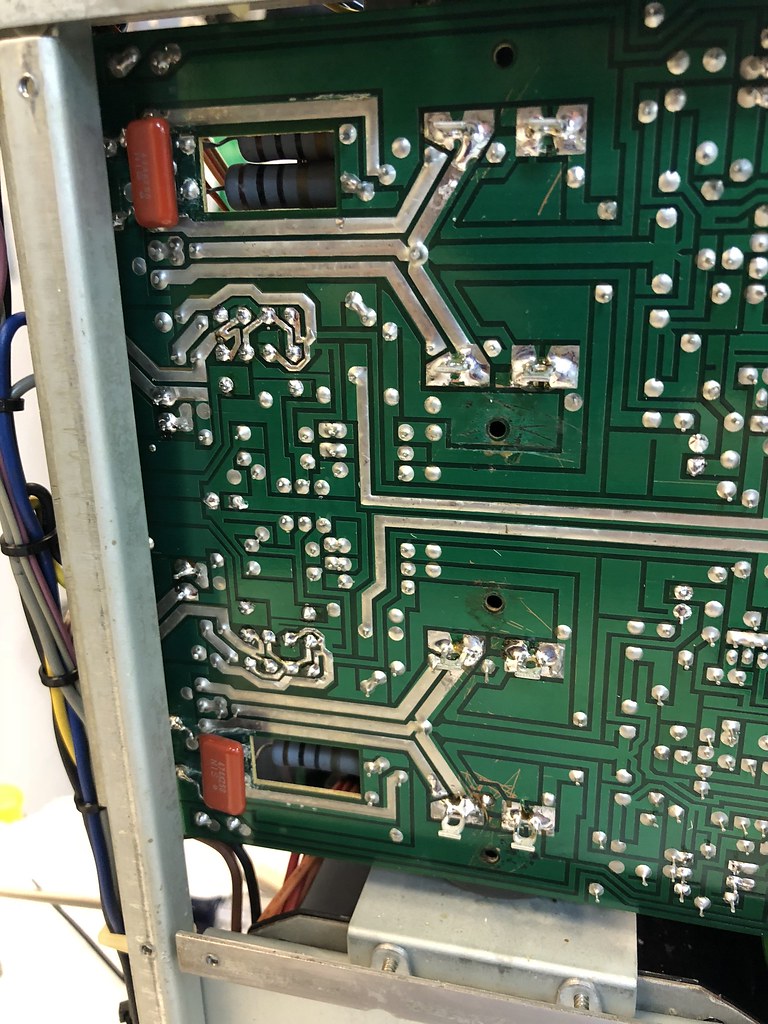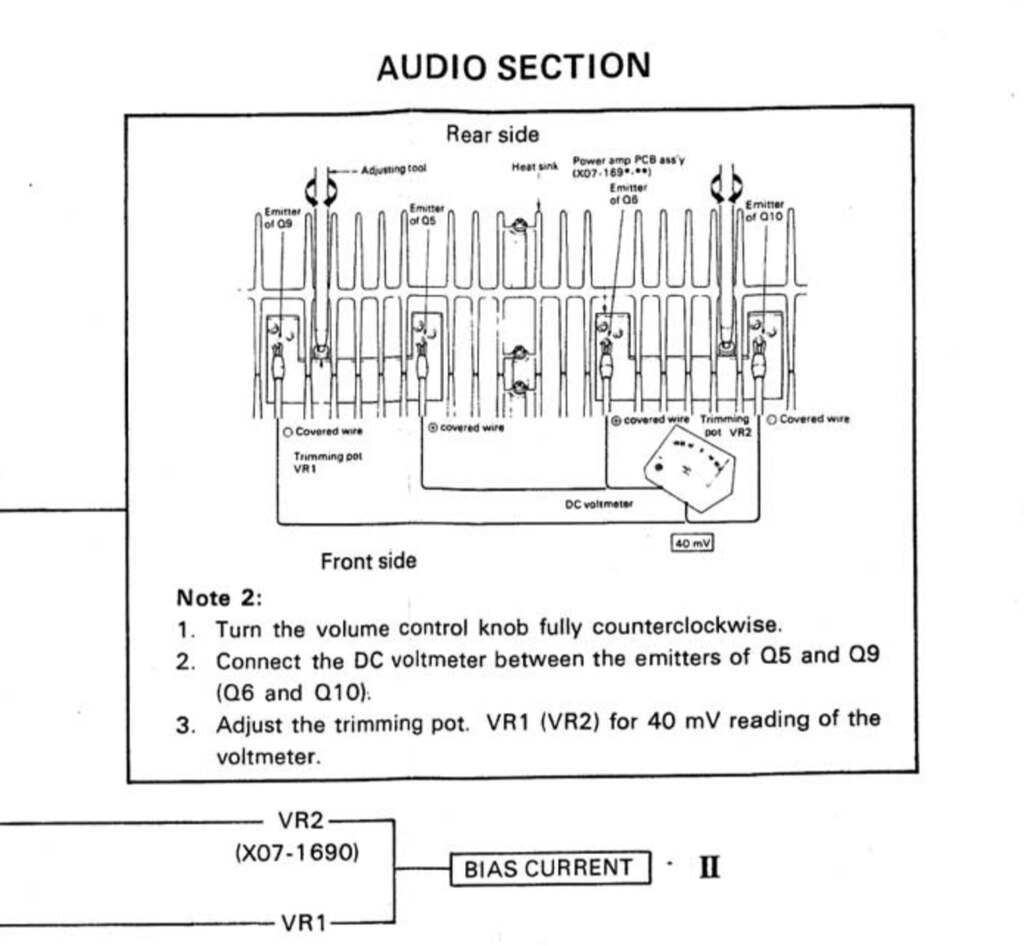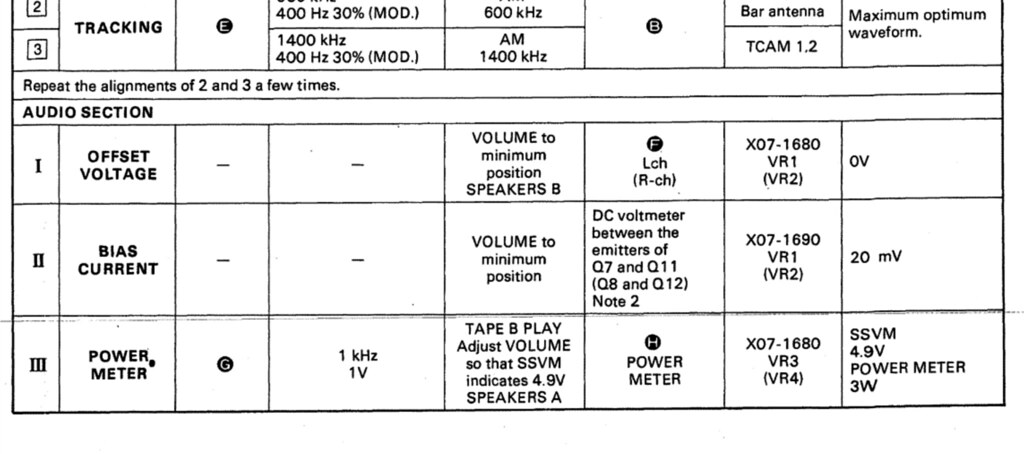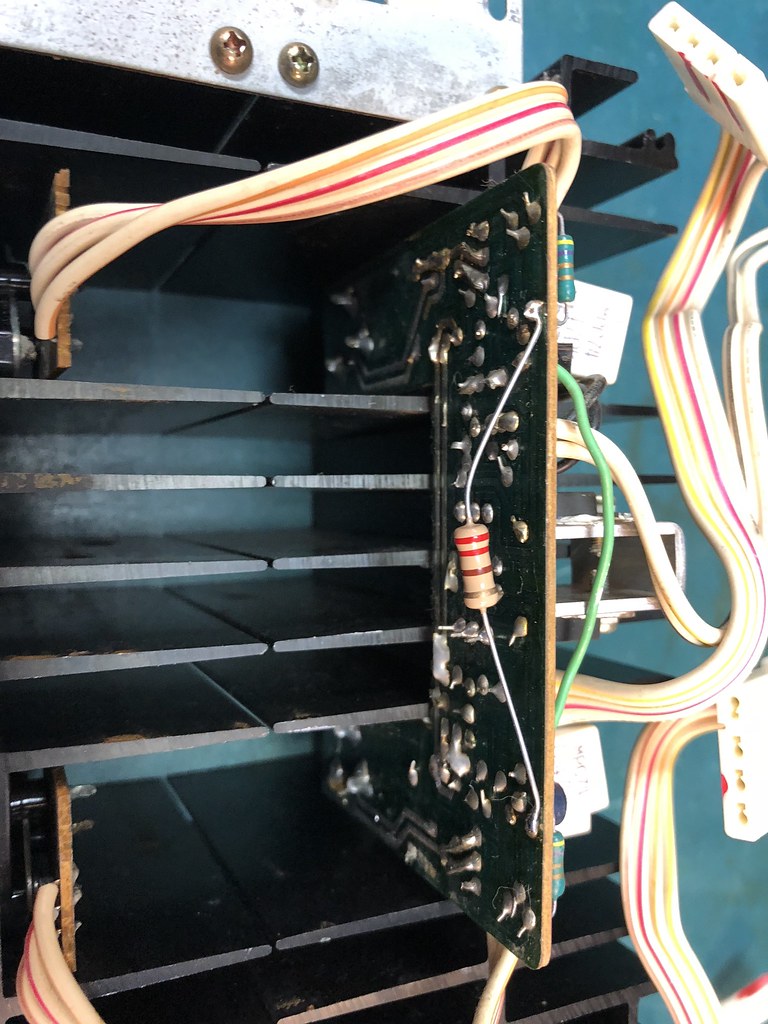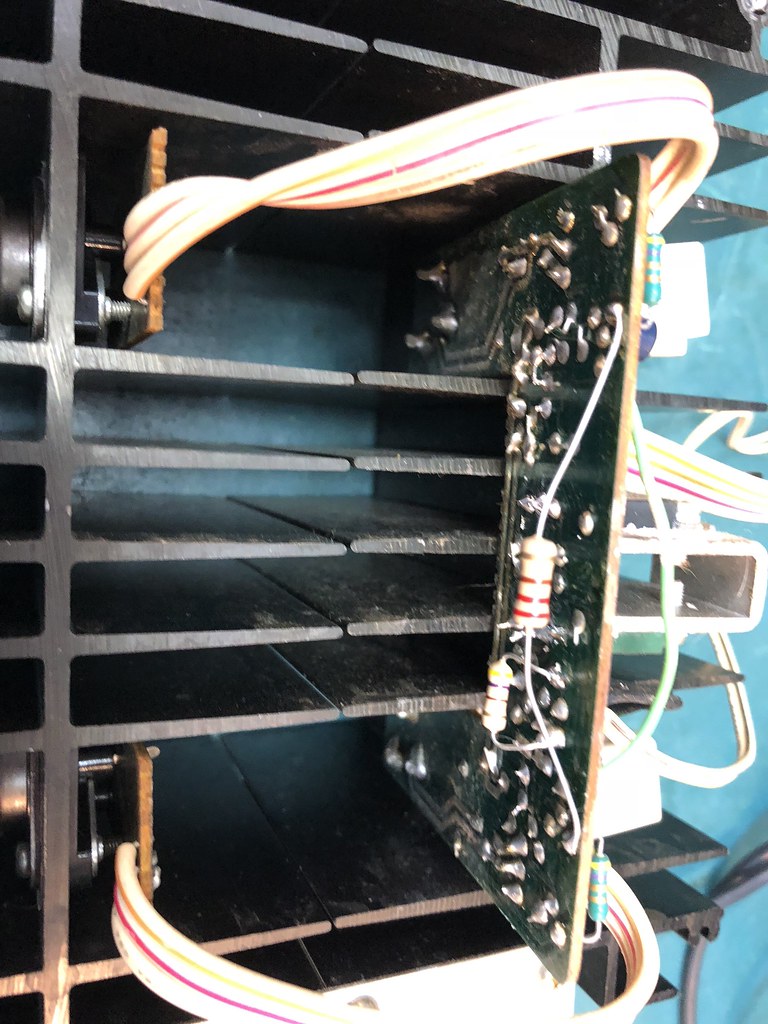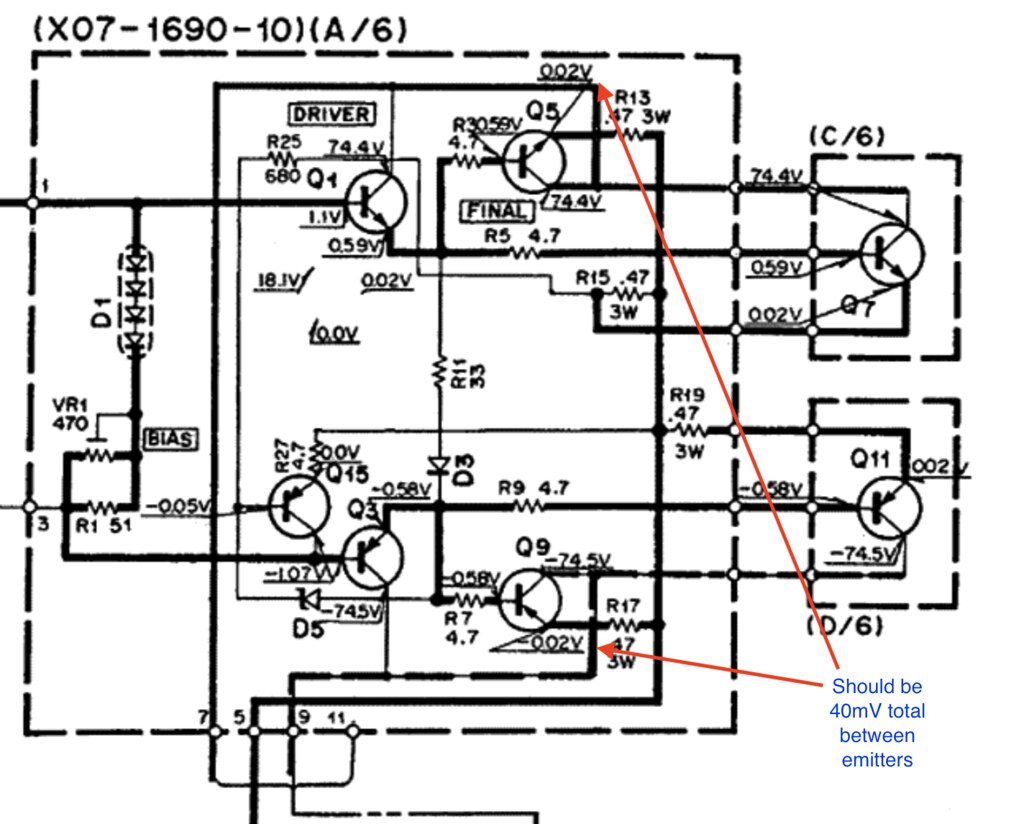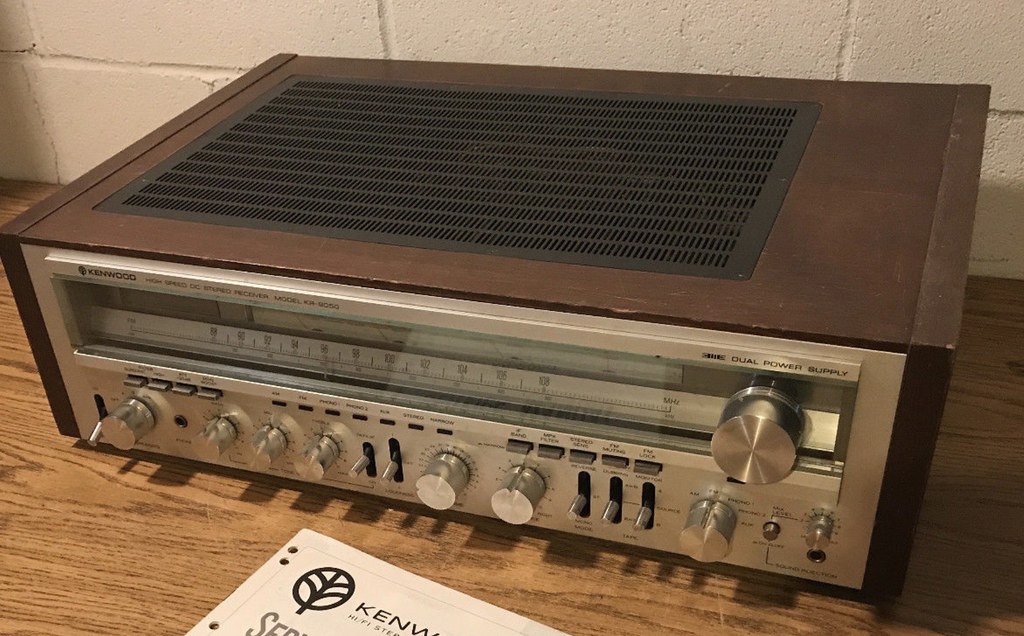
I picked up this unit in kind of rough shape. The seller said that he had some recent work done but soon after he got it back the left channel dropped out. It looked much better in the ad than in the flesh.
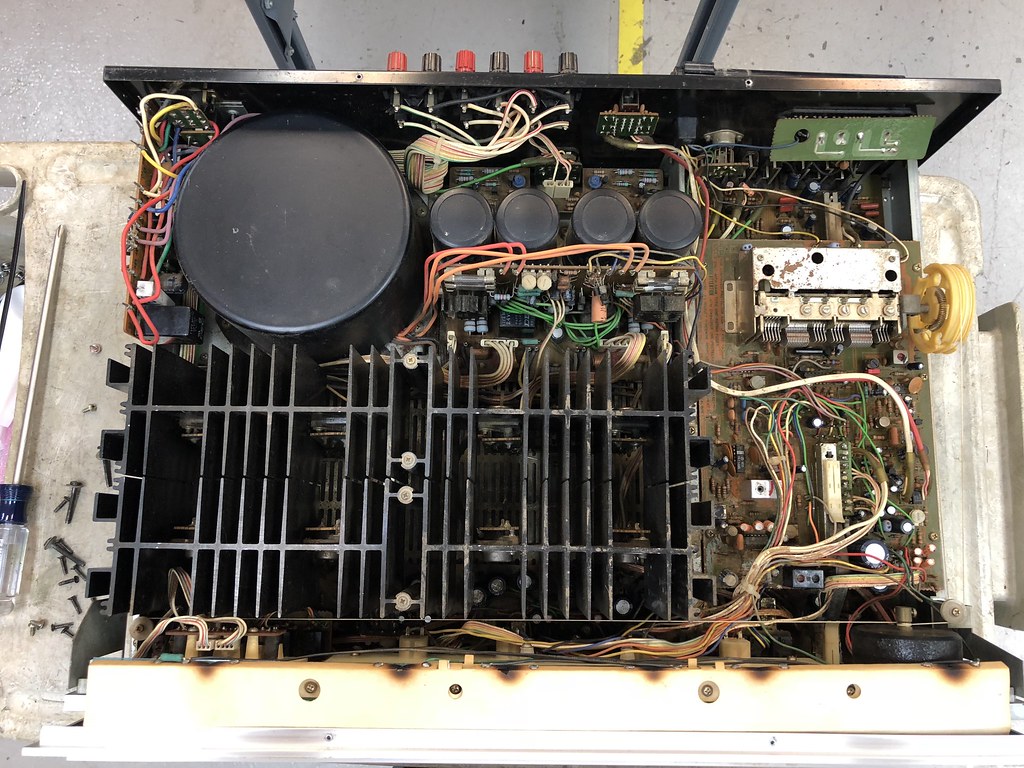
I gave it a quick evaluation, powers up, one channel plays, tuner wiggles when I turn the knob. The inside was filthy, maybe from a smoking environment, the wood case is in bad shape. The faceplate in blemish free with all of the lettering in tact and the knobs are in good shape. The lamps have burned holes in the cardboard. Previous work shows the outputs are a mix of NTE and other parts. This will require a full restoration.
I started by stripping the faceplate and power amp section and bringing the chassis to the slop sink for a cleaning. The circuit boards have a layer of slimy gunk all over them that will not come off easily so I decided to use a technique that I previously used to clean a Marantz 2500 that had been in an attic for 20 years. Basically, what I did was to carefully soak the boards down with Windex avoiding the face of the receiver. The ammonia in the Windex breaks down the slime. With the boards nice and wet I use a paint brush to agitate and loosen up any hard to remove material. I then use water to thoroughly rinse everything off. I then use compressed air to blow as much water out as possible and wipe off anything I can. The next, and most important step, is to bake any water out. This is done using a small oscillating space heater for 8 hours. After about 20 min the receiver is quite warm to the touch and is basically dry. After 8 hours it is completely dry and baked out. The boards look much better but it’s still not really clean, I will clean them more thoroughly later.
The next step is to remove the preamp and power supply sections for restoration on the bench. Even though it looks quite possible to do them without removal it's was way easier to work on the bench. I ended up pulling the tuner board as well.
As I worked on the unit I could see signs of previous work by a hack technician. Mismatched silicon, tack soldered resistors and caps exct… I suspect that the technician was having problems with the amp oscillating and used some additional components in an attempt to solve the problem.
I also found evidence of rework in the incoming power section with the voltage selector bypassed because the switch had failed. I need to replace it.
By the time I was done stripping the boards out and re capping the unit it was hardly recognizable.
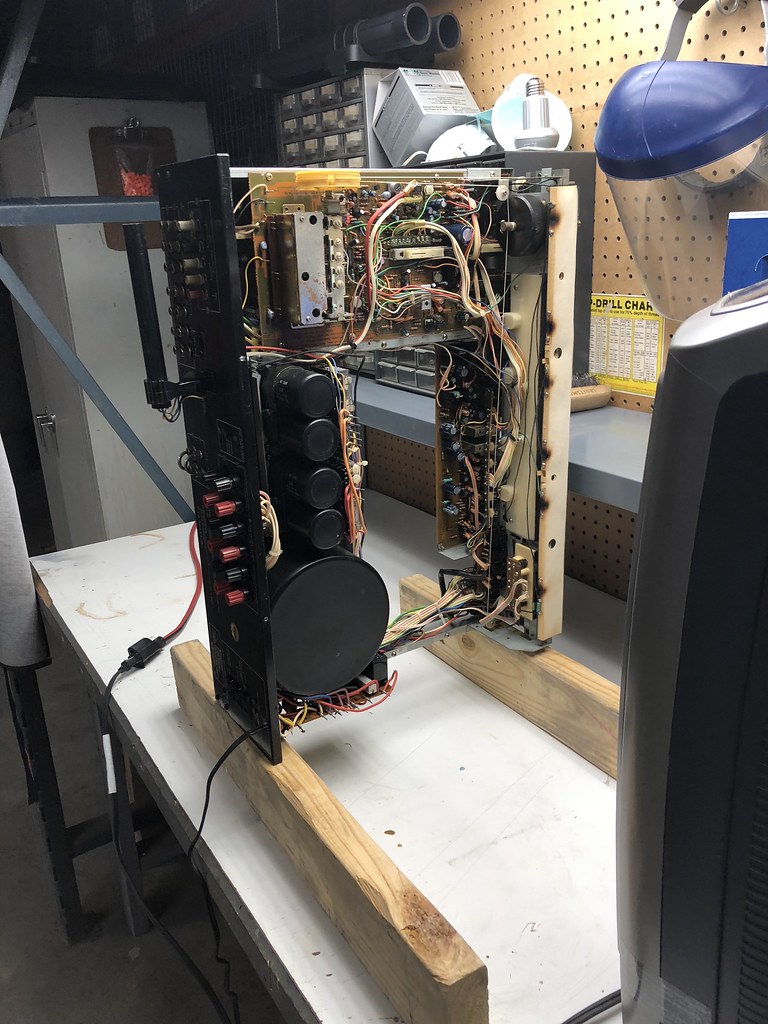
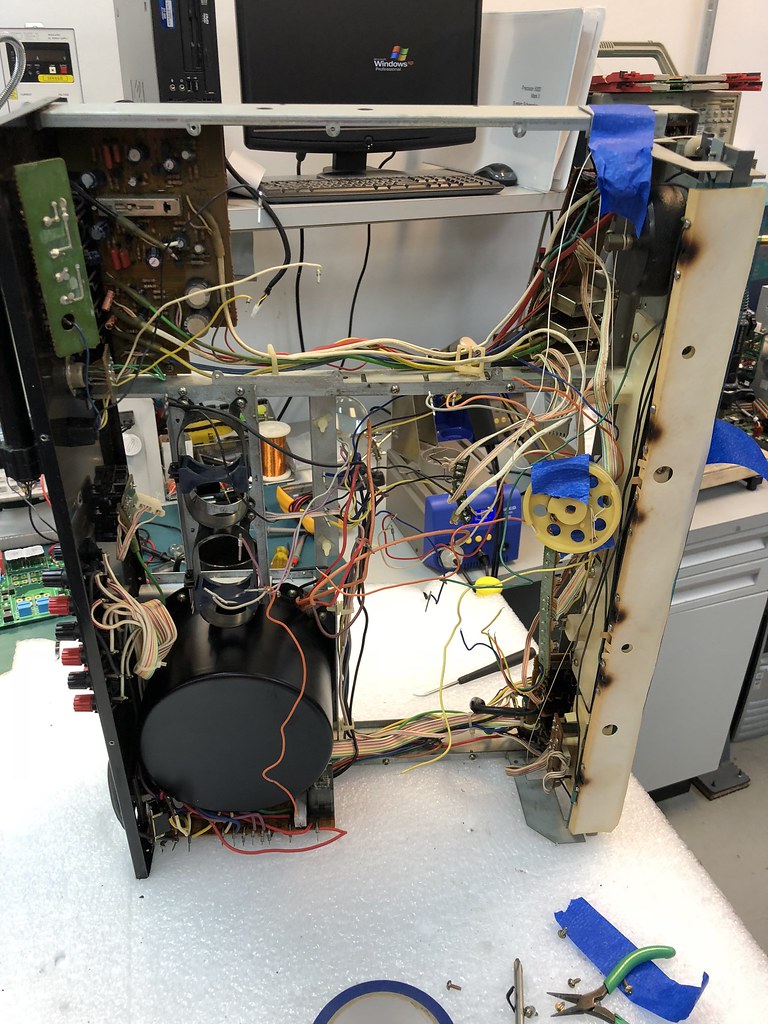
The filter caps were leaking, bummer!
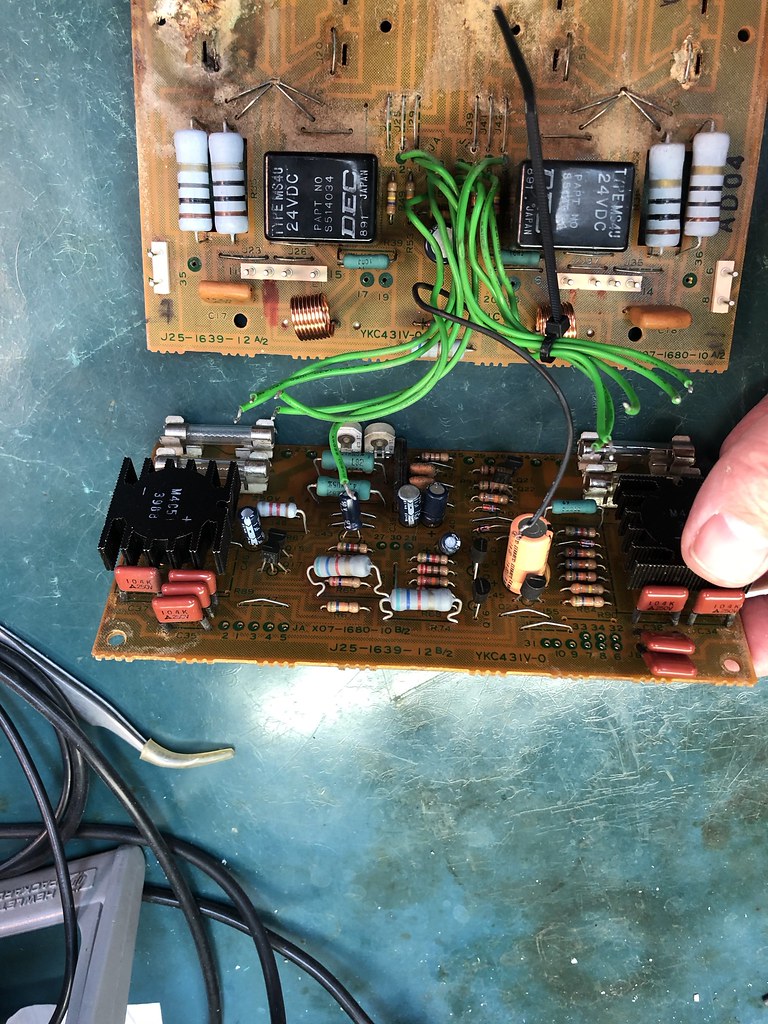
For this restoration I decided to keep the specs of the parts as close as possible to the original. This is a challenge since much of the silicon for the amp section was replaced with inferior parts. All of the original caps were ELNA's so I used ELNA SILMIC II's where possible. A few of the caps were specified as low leakage so appropriate Nichicon's were used. Sourcing the original ELNA filter caps was not possible so Nichicon KG 10000uF 100V Gold Tune electrolytic LKG2A103MKNF were used. Thees are drop in replacement at the same size and value. This was important since the solder tabs line up exactly. I had to order them from a place called Razzmatazz out of Italy, no one else had them. I could have gone with a sub of a different size and saved a few (actually a lot) of dollars but this would have gone against the theme of the restoration.
This brought me to the next issue... The amp section was a mess of mixed NTE crap. I was able to source enough of the 2SA1116 and 2SC2607 outputs. I had thought of using ON SEMI parts to do the job but they were not as fast as the 2SA1116 and 2SC2607's. At first I did not think this would be important however, after reading a bit about the KR-9050 I understood what the "HI-SPEED" marketing was about. Apparently the KR-9050's high speed meant that it had quite a slew rate, 100V/microsecond. Would it work with the ONSEMI parts? Not sure, but I suspect that it would. The FT of the 2SA1116 and 2SC2607 is 100 Mhz. Most modern ON Semi parts are 30 Mhz. Anyway, more $$$$ spent on parts. I am still waiting on the driver transistors, hopefully I will have them next week.
I will give the boards a final bath, removing all of the rest of the crap and flux. I do this by using a pan with denatured alcohol and a paint brush. I clean them, rinse and dry.
I dropped the cabinet off at my brother's house for new veneer.
I have a parts list that I will post when complete.




